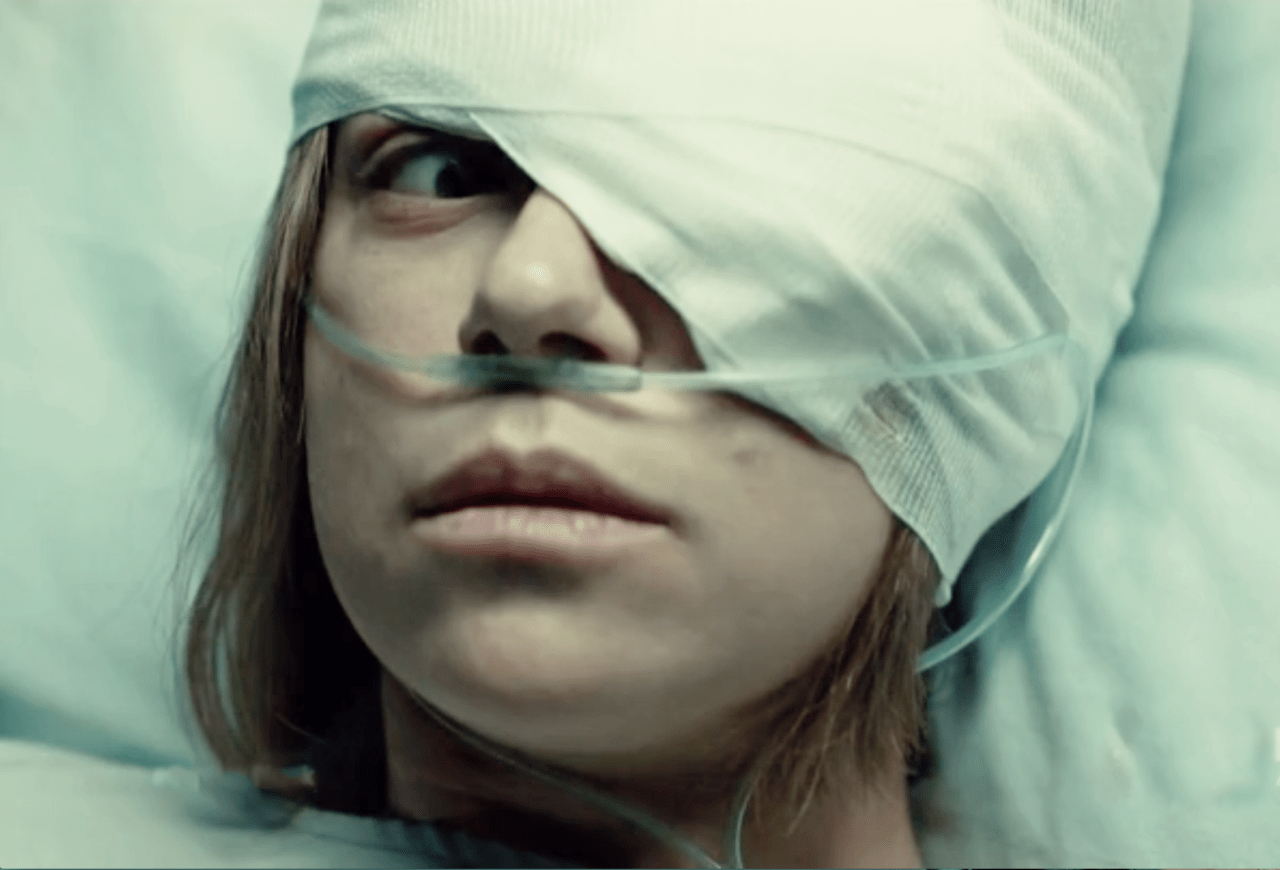Orphan Black Science Recap: “The Weight of This Combination”
Science side of Tumblr, at your service.

If you haven’t watched the latest episode of Orphan Black, be forewarned: there will be spoilers. There will also be crazy science.
Nina: Let’s talk about Rachel Duncan’s brain.
Casey: In the season 2 finale, we saw Sarah take down Rachel via Cosima’s projectile device, sending an extremely sharp pencil directly through her eye. The pencil appeared to penetrate through the eye, at a depth and angle that definitely had me thinking about brain damage.
Nina: Absolutely. What happened to Rachel in the finale immediately reminded us of Phineas Gage. Gage is a bit of neuroscience legend—in 1848 he was a young man working on a railroad. He was tamping gunpowder down into a blasting hole with an iron rod when he got distracted and turned his head. Accounts differ about what exactly happened next. Did he keep tamping without looking at his work and scrape the rod on the rock? Did his assistant forget to add sand to the blasting hole and did Gage slam the rod into straight gunpowder? One thing’s for sure: sparks happened, gunpowder was ignited, and the tamping rod was blasted straight through his skull. His left frontal lobe was destroyed.
He lived. He never even lost consciousness. In fact, he was reportedly steady enough after a few minutes to climb into a cart himself to be taken to a doctor. At the time, common opinion was that the frontal lobe was pretty much useless, and this totally jibed with Phineas Gage walking and talking without much difficulty despite having his left frontal lobe completely pulped. The doctor decided that Gage’s brain must be fine.
When Delphine goes in to interrogate Rachel, we see that she is experiencing what is known as apraxia of speech, which is limited and difficult speech ability due to the inability to connect conscious speech plans with motor functions. That is, Rachel knows what she wants to say, but she can no longer properly control function of her lips, tongue, and jaw muscles.
As Delphine interrogates her, we see that her memory appears to be intact. She answers Delphine’s questions to the best of her ability, seemingly on topic; she knows who she is, who Delphine is, and what Delphine wants. This is all consistent with frontal lobe damage, as this is a center for language motor functions, not memory or intelligence.
The pencil most likely did not hit far enough back to injure Broca’s area, because Rachel exhibits the signs of apraxia of speech, but not of Broca’s aphasia. Broca’s aphasia includes a similar inability to verbalize and incapacitated language motor skills, but it is also combined with an inability to sequence verbal thoughts. If Rachel had been experiencing Broca’s aphasia, she would not have been able to answer Delphine’s questions, and would most likely have just responded with muddled speech with no coherent meaning.
Nina: Rachel’s seemingly random use of the word “corncob” in her conversation with Delphine definitely had me thinking aphasia at first. We now know, thanks to show creator Graeme Manson, that “corncob” wasn’t a nonsense word after all.
Casey: What does this injury mean for Rachel’s future? That remains unclear. Brain injuries are all unique and unpredictable. Symptoms could be temporary or permanent, and new symptoms could arise as time progresses.
As for what’s common in frontal lobe injuries, patients usually go one of two ways. There is the Phineas Gage way that Nina mentioned, where the person undergoes a personality change, loses inhibitions, becomes impulsive and slightly irrational, and often becomes a heightened or extreme version of themselves. This could result in such things as inability to read social cues, a decreased ability in rational thinking, no longer understanding the consequences of one’s behavior, etc.
The other common outcome for patients of frontal lobe injuries is to become extremely withdrawn and depressed. These patients often live in a sort of semi-vegetative state, closing themselves off from all social interactions and necessary functions like eating, exercising, sleeping, etc.
In the case of Rachel Duncan, being that Orphan Black is a high-paced TV show, I would guess they would go the route of option one and explore Rachel Duncan experiencing a change in personality. For someone like her, who already had a proclivity for extremes and impulses, this change could manifest as an even more violent Rachel Duncan, which would be terrifying. I can only imagine what would happen to Delphine once this Rachel got back on her feet.
Casey Griffin is a graduate student in genetics and developmental biology. She dissects mouse hearts, does lots of PCRs, and nerds (and cries and screams) about Orphan Black. You can check out her OB Science Time Tumblr posts here.
Nina Nesseth is a professional science communicator, emerging playwright, and serial tea-drinker. She’s happiest when science-ing at people (yes, that’s “science” as a verb) and watches way too many movies (but she lacks stamina and falls asleep if she tries to watch two in a row). You can find her on Twitter @cestmabiologie.
—Please make note of The Mary Sue’s general comment policy.—
Do you follow The Mary Sue on Twitter, Facebook, Tumblr, Pinterest, & Google +?
Have a tip we should know? tips@themarysue.com